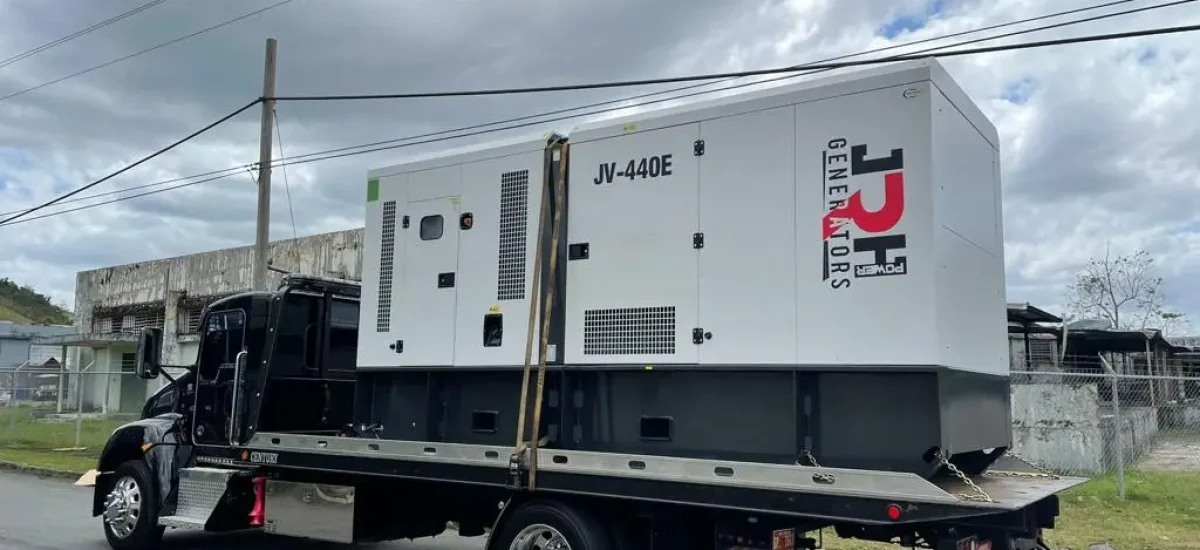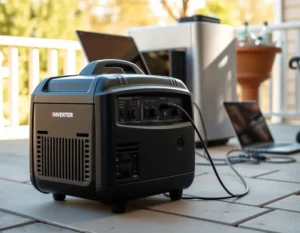Why doesn't the Fuel Reserve Light turn off?
In the world of electric generators, the fuel reserve light is a fundamental guide that indicates the need to recharge the tank to maintain the constant flow of energy. However, what happens when this light persists, even after you have added fuel?
In this post, we will explore the possible causes and offer practical solutions for when the "fuel reserve light does not turn off". Join us on this exploration to keep your generator in its best condition!
Table of Contents
Deciphering the Fuel Reserve Light on Generators
In the world of electric generators, the fuel reserve light acts as a crucial indicator that demands our attention. This small but significant light is not only a reminder of the need for fuel, but also plays a vital role in the continuity of electrical supply.
The fuel reserve light, also known as the low fuel indicator, comes on when the fuel level in the generator reaches a critical point. It is a preventive mechanism designed to alert users of the imminent need to refuel.
But we need to ask ourselves: What happens when the fuel reserve light does not turn off?
Why is this little light so important?
The main purpose of the fuel reserve light is to ensure that the generator runs efficiently and steadily. When this light comes on, it indicates that it is time to take action to prevent the generator from shutting down unexpectedly. Lack of fuel can result in unplanned power outages, which can have significant consequences, especially in critical situations.
How does it work and what does it tell us?
The fuel reserve light operates based on a sensor located in the generator fuel tank. This sensor monitors the fuel level and when it detects that it is getting low, it activates the warning light. It is essential to understand that this light not only warns us about the need to refuel, but also gives us an opportunity to plan and avoid interruptions in the electrical supply.
Investigating Problems: Fuel reserve light does not turn off
Although the fuel reserve light is designed to alert us to the need to refuel, there are situations in which it remains on, even after taking the appropriate measures. We will carefully examine the possible causes behind the problem when fuel reserve light does not turn off and how to address it effectively.
Incorrect Fuel Level:
One of the most common reasons why fuel reserve light does not turn off after refueling it is an incorrect level. It is crucial to ensure that the tank is filled properly and that the fuel level sensor is working properly.
Defective Fuel Level Sensor:
If this sensor is faulty, it may give incorrect readings, causing the light to remain on even when the tank is full. Inspection and possible replacement of the sensor are essential steps to solve this problem.
Electrical or Electronic Problems:
Irregularities in the generator's electrical or electronic system can affect the operation of the backup light. Short circuits, loose connections, or problems on the electronic control board can interfere with the light signal. A thorough inspection is essential to identify and correct any electrical problems. For this reason, it is essential to carry out a maintenance to your team.
Failures in the Warning System:
If there are faults in other components of this system, such as cables or indicators, the problem of the fuel reserve light does not turn off A complete diagnosis of the warning system is necessary to address these problems.
Incorrect Calibration:
Calibration of the warning system, including the fuel level sensor, is essential for its accurate operation. Incorrect calibration can lead to inaccurate readings and therefore the backup light not turning off. Adjusting the calibration to the manufacturer's specifications may resolve this issue.
Are you finding this information useful?
We hope this fuel reserve light guide has been helpful in optimizing the performance of your generator. If you want to explore more content related to electric generators, maintenance and practical tips, head to our blog. There you will find detailed articles, news from the sector and everything you need to be informed about the world of electrical energy or you can see our Diesel electric generators.

Clearing the Way: How to Resolve the Persistent Backup Light on
The persistence of the fuel reserve light can be a frustrating problem, but there are practical solutions that allow you to restore its normal operation. Let's explore in detail how to turn off this light and ensure the warning system is working properly.
Fuel Level Check:
Before tackling more complex problems, it is essential to check the fuel level. Make sure the tank is full and there are no obstructions preventing the fuel level sensor from reading accurately.
Fuel Level Sensor Check and Replacement:
If the light persists, it is time to inspect the fuel level sensor. A faulty sensor may be the cause of the malfunction. Perform a thorough check and, if necessary, proceed with sensor replacement to restore functionality.
Diagnosis of the Electrical and Electronic System:
Electrical or electronic problems may interfere with the backup light turning off properly. Check the integrity of the electrical system, look for loose connections or shorts, and address any anomalies that may affect the warning system signal.
Proper Calibration:
Adjust the warning system calibration to the manufacturer's specifications to ensure the light turns off correctly after refueling.
Comprehensive Inspection of the Warning System:
A complete inspection of the warning system, including cables, indicators and other components, is essential to identify any additional faults. Addressing and correcting these issues will ensure reliable system operation.
Consultation with Professionals:
If the above solutions do not solve the problem, it is advisable to seek professional advice. A generator technician can perform advanced diagnostics and offer specific solutions based on the characteristics of your generator.
Preserving Functionality: How to Care for and Maintain Backup Light
Keeping the fuel reserve light in optimal condition is essential to ensure its correct operation and the operational safety of your generator. Next, we will address practices of maintenance and care that will extend the life of this key component.
Regular Inspection: Look for signs of wear, corrosion, or physical damage. Detecting problems early will allow you to address them before they affect functionality.
Proper Cleaning: The accumulation of dirt, dust or debris can interfere with the visibility and performance of the light. Gently clean the surface and surrounding areas to prevent clogs.
Protection from Elements: If your generator is located outdoors, consider installing guards or covers to protect the backup light from the elements. Prolonged exposure to the elements can accelerate wear and tear and affect signal quality.
Connection Verification: Make sure the cables are firmly connected and without signs of corrosion. Poor electrical connections can affect signal transmission.
Periodic Calibration: Proper calibration ensures accurate readings and prevents unnecessary light activation. Consult your generator manual for recommended intervals.
Maintenance Log: This will make it easier to track the procedures performed and help in identifying patterns or recurring problems.
Timely Replacement: If, despite maintenance efforts, the backup light presents recurring problems, consider replacing it in a timely manner. A component in poor condition can compromise the integrity of the warning system.
You need advice?
If after exploring the various facets of the fuel reserve light you need personalized guidance for your generator, we are here to help!
Our expert advisors in electrical generators They are ready to provide you with advice tailored to your needs. Contact us now and ensure the efficiency and reliability of your energy system.

En el mundo moderno, donde la electricidad es fundamental para nuestras actividades diarias, las interrupciones eléctricas son un gran inconveniente, pueden afectar nuestra productividad y

Las turbinas eólicas se han convertido en el emblema de la energía renovable, ofreciendo una solución sostenible y limpia frente a los combustibles fósiles. Sin

Cuando se trata de mantener la energía en situaciones de emergencia, durante viajes de campamento o en eventos al aire libre, un generador de 3500

En tiempos de cortes de energía o desastres naturales, saber cómo usar un generador para alimentar una casa puede marcar la diferencia entre estar preparado

La búsqueda de energías alternativas se ha convertido en un pilar fundamental en la discusión sobre sostenibilidad y el futuro energético del planeta. Pero, ¿cuáles

En un mundo donde la demanda de energía eléctrica sigue en aumento, las interrupciones de servicio y el costo creciente de la electricidad han impulsado

